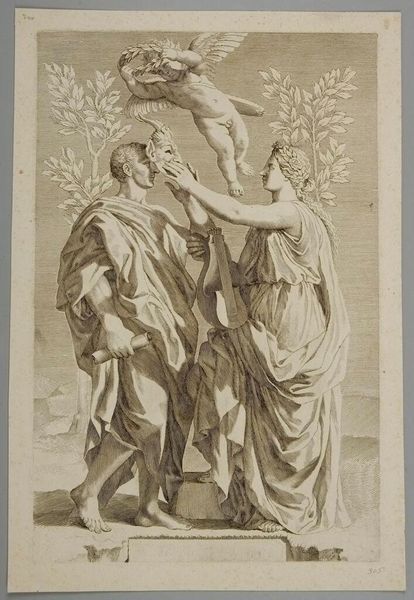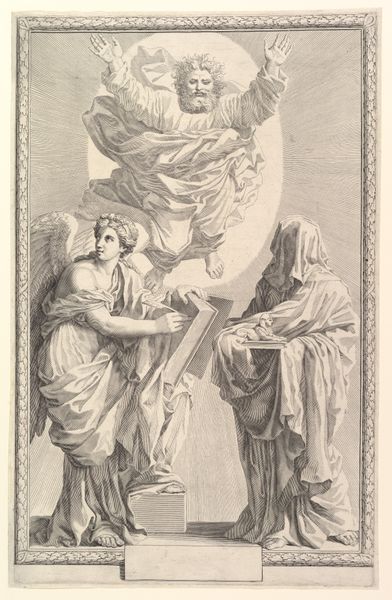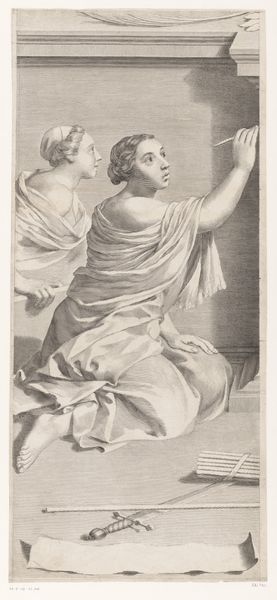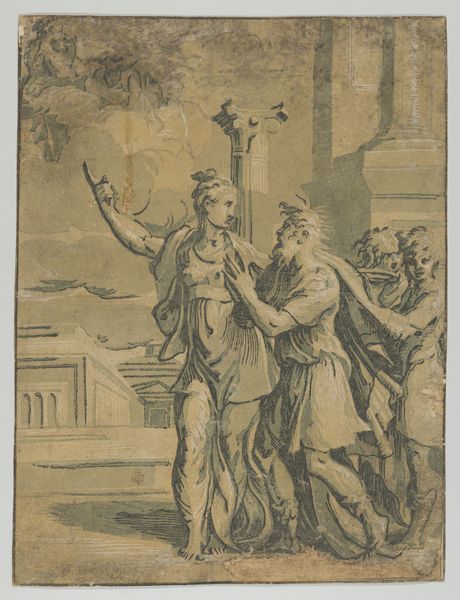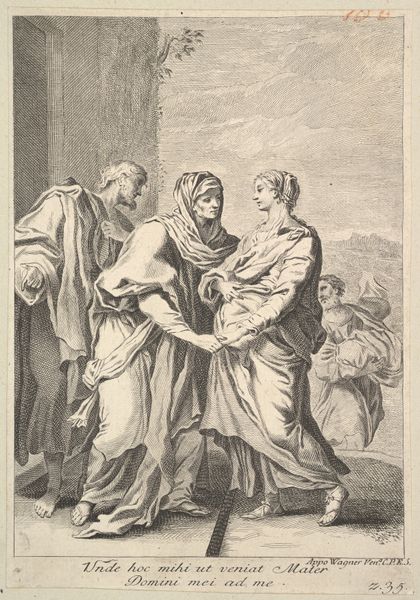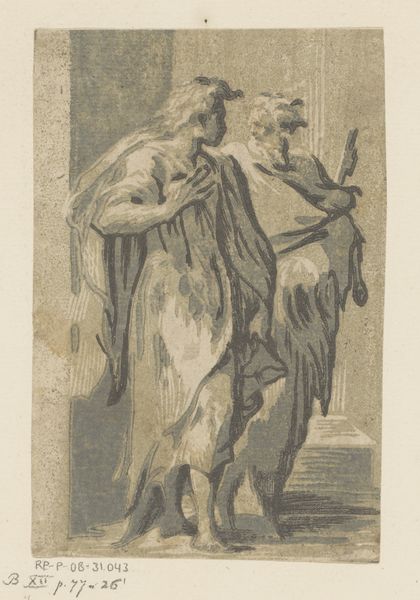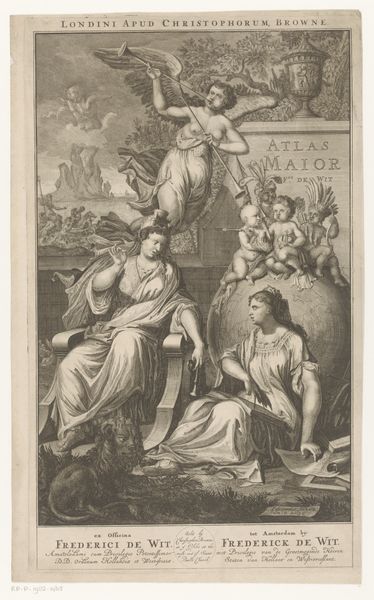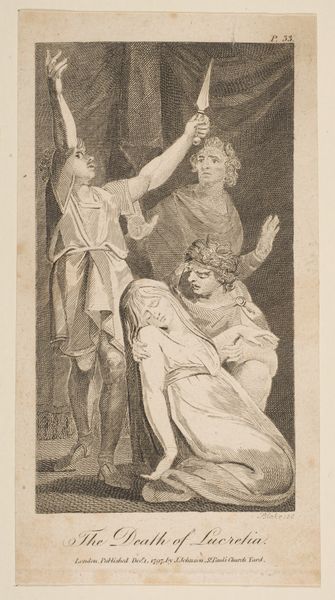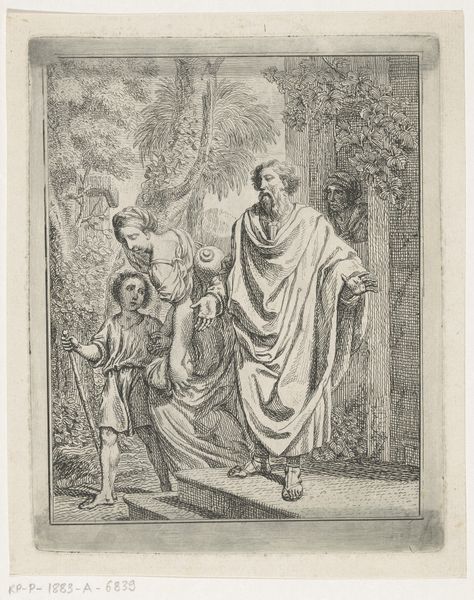
Frontispiece: Horace, Quinti Horatii Flacci Opera 1642
0:00
0:00
drawing, print, engraving
#
drawing
#
allegory
#
baroque
# print
#
figuration
#
history-painting
#
engraving
Dimensions: sheet: 13 7/8 x 9 in. (35.2 x 22.9 cm)
Copyright: Public Domain
Curator: Well, what do you make of it at first glance? Editor: Strikingly delicate, ethereal even, yet there's a strange tension between the figures. It feels poised, like a tableau vivant waiting to begin. Curator: Precisely. What you're seeing is Claude Mellan's "Frontispiece: Horace, Quinti Horatii Flacci Opera" from 1642. It’s an engraving meant to preface the works of the Roman poet Horace. Mellan was a master engraver; his skill with line is quite evident. Editor: Engraving, of course, lends itself to reproduction. I’m fascinated by the accessibility a print like this offered. Whose hands held it, do you think? And in what setting was it consumed? Curator: Likely the libraries and studies of wealthy patrons, intellectuals, perhaps even fellow artists seeking inspiration. The image itself is a rich allegory: the figure of Tragedy, crowning Horace with a theatrical mask as a putto hovers overhead with a laurel wreath. It speaks to Horace's versatility in both tragic and lyric poetry. Editor: So, Tragedy bestowing... artifice? The mask feels a little deceptive, almost like a critique of performance itself, even as it elevates Horace. And the materials are crucial here – the copperplate, the ink, the paper - each dictated the impression and availability of Horace's work. Curator: An interesting observation about the mask. It's also a commentary on the nature of artistic representation itself. The clean, deliberate lines showcase Mellan’s technique, drawing the viewer into a world of classical learning and theatrical flair. Editor: I see those precise lines, that careful labor, as a crucial part of the work's meaning. We tend to focus on the subject, on Horace's legacy, but the act of *making* this print is deeply entwined with how that legacy circulated. It shaped how subsequent generations encountered Horace, no? Curator: Undoubtedly. These images, produced en masse, carried classical culture forward through new social strata, adapting meaning to suit new viewers. Think of it as Baroque era 'intellectual' property, ready for consumption. Editor: It makes you ponder the journey of this very print – where it was made, who owned it, how it influenced the artistic and intellectual landscapes of its time and beyond. It all highlights how images like this actively participated in shaping cultural and political perceptions. Curator: Absolutely, and it serves as a reminder that even ostensibly timeless works are deeply rooted in the conditions of their making and reception. Editor: Yes. This exploration highlights the interplay of history, culture and artistic creation across generations, all from this single artwork.
Comments
No comments
Be the first to comment and join the conversation on the ultimate creative platform.
